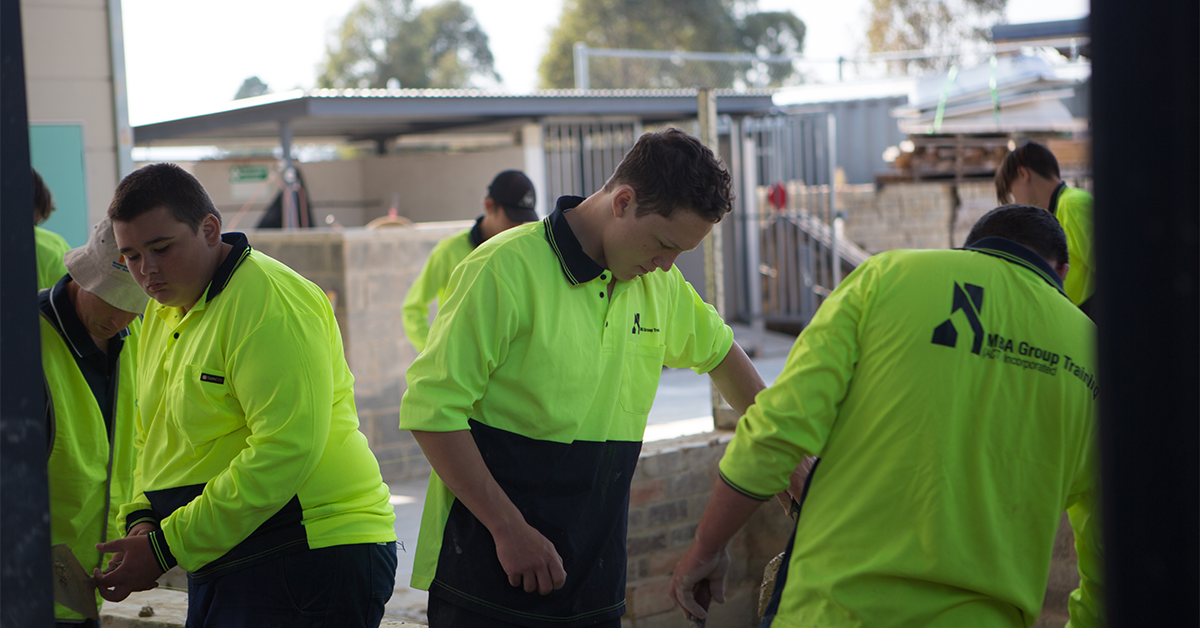- No products in the cart.


Master Builders today is formally launching its Jobs and Skills for the Future policy as part of its Strong Building: Strong Economy campaign for the next term of government.
“Master Builders’ policy is driven by productivity reforms to the apprenticeship system that will form part of the additional 300,000 skilled workers in the construction industry in the coming decade,” Wilhelm Harnisch, CEO of Master Builders Australia said.
“A revitalised and skilled workforce is important to driving future productivity of the industry, in providing rewarding careers and in supporting economic growth which is important to Australia’s standard of living,” he said.
“The building and construction industry is at the forefront in providing over 1,000,000 workers with rewarding jobs,” Wilhelm Harnisch.
“The construction industry is the largest full-time employer of Australians under 24 years of age. It also trains the largest number of apprentices with 48,200 Australians enrolled in construction training across Australia,” he said.
“Master Builders Australia has set a target of 100,000 building trade apprentices in training by 2020 and a reduction in the 50% drop out rate in launching its call for a revitalised apprenticeship training system,” Wilhelm Harnisch said.
“The 14 per cent increase in apprentice tradies commencing apprenticeships in the past year and the contrasting 24 per cent fall in apprentices completing their apprenticeships shown in the latest data from the National Centre for Vocational Education Research (NCVER) is evidence that while there has been improvement there remains a long way to go before the system meets the industry’s needs,” Wilhelm Harnisch said.
Master Builders’ benchmarks for delivering workforce skills and an apprenticeship system that meets the needs of both young people and employers are:
- 80% of the building and construction industry workforce holding a post-school qualification, up from the current 60% who hold a post-school qualification.
- 100,000 construction workers and apprentices in training, including new entrant apprentices and workers upgrading their skills.
- 30,000 new apprentice commencements each year in trades as diverse as carpentry and joinery, bricklaying and painting and decorating.
Master Builders’ 10 key policy priorities to deliver these outcomes are:
- Introduction of pre-apprenticeship programmes that provide our future apprentices with entry level skills to work safely on construction sites.
- Apprenticeship programmes that provide our young people with safety and job-ready skills to work productively in the industry, trained to industry benchmarks with independent assessments.
- Implementation of industry-centred mentoring programmes that have demonstrated results in lifting apprenticeship completion rates.
- Greater support for industry-led programmes that aim to increase the number of women in non-traditional roles in the construction industry.
- Introduction of targeted measures and financial incentives that encourage employers and Group Training Organisations (GTOs) to increase the number of apprentices in the construction industry.
- Introduction of a national building and construction skills passport that enables employers to quickly assess an employee’s skills and experience and that assists labour mobility across state and territory borders.
- A review of national training packages, Government funding and training delivery with the aim to dismantle current complexities and harmonise the VET system across states and territories, to drive quality learning outcomes for apprentices and meet modern employer requirements.
- Introduction of new qualifications and skill sets that recognise emerging job roles and the adoption of new technologies on building and construction sites.
- An increased focus on language, literacy and numeracy training in our schools, TAFEs and private RTOs to ensure apprentices have the appropriate skills to complete their apprenticeships and to be successful in the building and construction industry.
- Establishment of a school engagement and an industry and school partnership programme that provides information to parents and students on the benefits of vocational education and training and enables greater industry participation in the development of partner school curricula and programmes.

